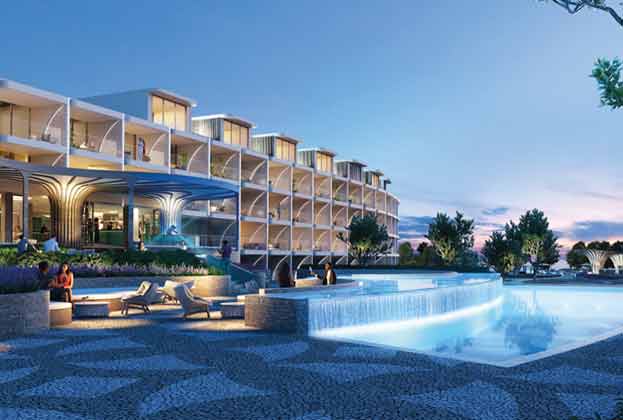As market conditions and buyer preferences evolve there is huge potential for the branded residences sector
A point of difference
The prime residential markets of many world cities are slowing. The Savills World Cities Prime Residential Index rose by just 0.4% in the first half of 2019, taking annual growth to 0.7%, the lowest levels seen since 2009. However, with a reputable brand over the door, branded property, perceived to be a ‘safer’ purchase, is positioned to stand out in more challenging market conditions.
Follow the wealth creation
Global growth may be slowing, but some cities are still generating wealth and are set to outperform in the near term, making them good targets for branded residential product.
Analysis of cities forecast to add the most high-income households in the next five years suggests that the US remains a market to watch, but local supply and market dynamics need to be taken into account.
New York is forecast to add 154,000 high income households in the next five years, more than any other city (see chart). This market is fully supplied, so investors may look to Los Angeles, Houston, Dallas and San Francisco, which are relatively undersupplied relative to forecast wealth creation (see chart).
In the Middle East, Kuwait City and Abu Dhabi offer potential with a large increase in high income households forecast, against no or limited supply. Dubai is forecast to add 24,000 high income households in the next five years, but has a very full supply of complete and pipeline projects. Saudi Arabia offers potential, led by Riyadh and Jeddah, and also supported by the country’s push into resort development.
A number of Australian cities are forecast to see strong wealth generation. Supply of branded product in Sydney, Melbourne and Perth is very limited, but sector potential should be considered against relatively weak market conditions at present.
Turning to Europe, London leads, resilient thanks to its world city status. Luxembourg, Zurich and Paris are forecast to add the next most high income households and have no supply of branded product at all. Development opportunities in historic European city centres are limited though; investors have had to focus on conversion and repurposing projects in order to secure prime locations.
Some cities are growing from a lower base. The cities forecast to see the largest increase of high income households in percentage terms include Hangzhou (an important Chinese tech hub), Guangzhou (the biggest city in China’s Greater Bay Area), and Berlin (Germany’s dynamic cultural and technology centre).
Prime residential markets here may be smaller or less established, and branded residences are well placed to offer comfort, security and familiarity to investors and buyers alike.
Responding to changing consumer preferences
Just because a brand is fashionable today doesn’t mean it will be tomorrow. Consumer preferences can, and do, change, and this has implications for the sector.
Hoteliers are proactive in this respect, reimagining brands over time to ensure they remain relevant to customers. Hotel branded residence developments factor in regular refurbishments of communal areas to make sure that schemes reflect current brand values. Hoteliers with a portfolio of brands may rebrand a property to reflect shifts in a particular market.
Millennials, valuing experiences over material goods and prizing individuality, have fuelled the rise of lifestyle brands such as W, SLS and MGallery. Early indications suggest that Generation Z (those currently aged under 24) are even less brand conscious than their predecessors.
It is no coincidence that we are seeing the entrance of players such as Condé Nast. With a portfolio of magazines, they will be able to curate lifestyle without being tied to a single product or brand. This flexibility should resonate with a customer base increasingly seeking a tailored living experience.
Read the articles within Spotlight: Branded Residences below.
Further information
Global Residential Development Consultancy
.jpg)


